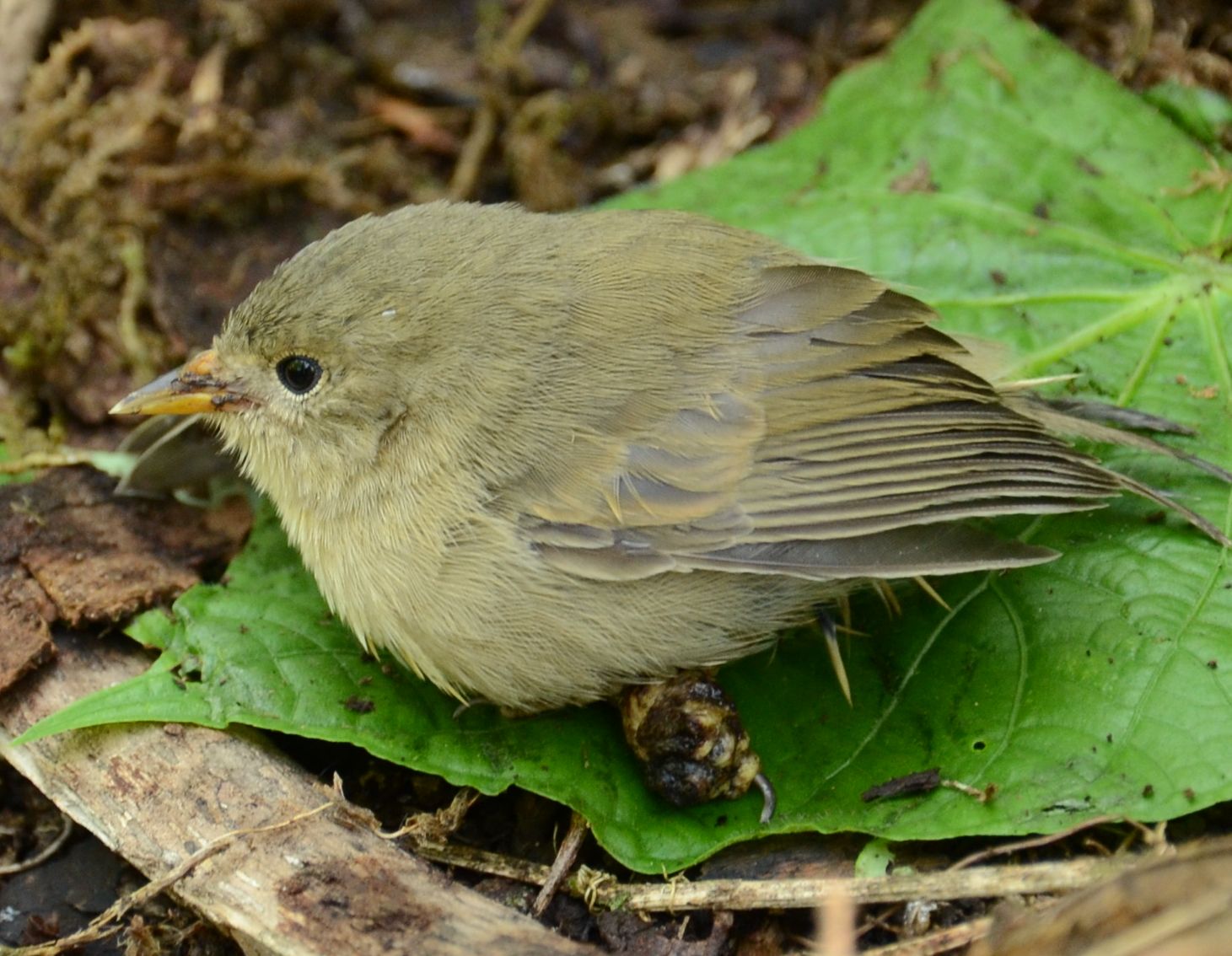Galapagos Species Database
The Galapagos Species Database shares the information about the species from our Natural History Collections.
Avipoxvirus canarypox virus
Viruela aviar, Pox virus

Enveloped, brick-shaped virus that infects birds. The virus causes wart-like nodules on feet, legs, base of beak, and eye margin. Lesions may become extensive enough to interfere with sight, movement, and feeding, leading to weakness and emaciation. The diphtheritic form of the virus may cause internal lesions in the respiratory and digestive systems, leading to breathing and swallowing problems.
First record is 1899. The mode of arrival in Galapagos is still unclear - see Parker et al., 2011. This virus may have been introduced on pet birds or may have arrived naturally with an infected migrant passerine.
Domain
Virus
Kingdom
Incertae sedis
Phylum
Incertae sedis
Class
Incertae sedis
Order
Incertae sedis
Family
Poxviridae
Genus
Avipoxvirus
Species
canarypox virus
Taxon category: Accepted
Origin: Cryptogenic
Year of first record: 1899
Impact in Galapagos: The virus is known to affect at least 9 passerine species in the archipelago, including mockingbirds, yellow warblers, and several finch species. Infected birds experience higher mortality rates, especially during stressful conditions such as El Nino years. Species that are already severely threatened such as the Mangrove finch and Floreana mockingbird may be pushed to extinction if the pox virus spreads to their populations.
Impact elsewhere: The virus is suspected of being a contributer to multiple extinctions of endemic bird species in Hawai'i.
Control methods elsewhere: To control avian pox, vectors of the disease such as mosquitos must first be controlled. Vector breeding sites are identified and eliminated. Infected individuals may also be removed from the population to eliminate the source of more viral transmission. Domestic birds can be vaccinated for some strains of avian pox, but vaccinations have not been proven to be safe, effective, or logistically feasible for wild bird populations.
Known Pest elsewhere: Hawai'i
Substrate or host preferences: birds
Trophic role: Phytopathogenic parasite
Distribution origin: widespread worldwide
Disease vector: The virus is vectored by biting arthropods such as mosquitos and biting flies. The virus can also be spread through contact of breaks in the skin or mucuous membranes with contaminated dust particles or surfaces.
Distribution: Champion, Española, Floreana, Isabela, Marchena, San Cristobal, Santa Cruz, Santa Fe, Santiago
- Deem, S.L. Cruz, M., Jiménez-Uzcátegui, G., Fessl, B., Miller, E. & Parker, P.G. (2008) Pathogens and parasites: an increasing threat to the conservation of Galápagos. Informe Galápagos 2007-2008. FCD, PNG & INGALA. Puerto Ayora, Ecuador. Pp. 136–141.
- Duffy, D. Harcourt, S. (1980) Investigaciónes sobre avian pox, distribución y efectos de la enfermedad en las aves de Galápagos. In: Duffy, D.C., Reynolds, D.J. & Campos, M.J. (eds.): Informe Annual ECChD. Estación Científica Charles Darwin. Puerto Ayora, Ecuador, p. 109-112.
- Hansen, W. (1999) Chapter 19: Avian Pox M. Friend, J.C. Franson, E.A. Ciganovich, (eds.): Field Manual of Wildlife Diseases: General Field Procedures and Diseases of Birds. Information and Technology Report 1999–001, U.S. Geological Survey, Washington D.C., p. 163-169.
- International Committee on Taxonomy of Viruses (ICTV) (2010) Virus Taxonomy List: 2009 Release, online database. http://www.ictvonline.org/virusTaxonomy.asp?version=2009.
- Jiménez-Uzcátegui, G. Wiedenfeld, D.A. & Parker, P.G. (2007) Virurela aviar en especies silvestres (Passeriformes) en la isla Santa Cruz, Galápagos, Ecuador. Brenesia 67: 29-34.
- Kleindorfer, S. Dudaniec, R.Y. (2006) Increasing prevalence of avian poxvirus in Darwin’s finches and its effect on male pairing success. Journal of Avian Biology 37: 69-76.
- Parker, P.G. Buckles, E.L., Farrington, H., Petren, K., Whiteman, N.K., Ricklefs, R.E., Bollmer, J.L. & Jiménez-Uzcátegui, G. (2011) 110 years of Avipoxvirus in the Galápagos Islands. PLoS ONE 6(1): e15989. doi:10.1371/journal.pone.0015989
- Thiel, T. Whiteman, N.K., Tirapé, A., Baquero, M. I., Cedeño, V., Walsh, T., Jiménez-Uzcátegui, G. & Parker, P.G. (2005) Characterization of canary pox-like viruses infecting endemic birds in the Galapagos Islands. Journal of Wildlife Diseases 41(2): 342-353.
- Vargas, H. (1987) Frequency and effect of pox-like lesions in Galapagos Mockingbirds. Journal of Field Ornithology 58(2): 101-102.
- Whiteman, N.K. Goodman, S.J., Sinclair, B.J., Walsh, T., Cunningham, A.A., Kramer, L.D. & Parker, P.D. (2005) Establishment of the avian disease vector Culex quinquefasciatus Say, 1823 (Diptera: Culicidae) on the Galápagos Islands, Ecuador. Ibis 147: 844-847.
You are welcome to download and use the information found in this page, acknowledging its source.
This page should be cited as follows:
"Galapagos Species Database, Avipoxvirus canarypox virus", dataZone. Charles Darwin Foundation, https://datazone.darwinfoundation.org/en/checklist/?species=11234. Accessed 31 December 2025.

